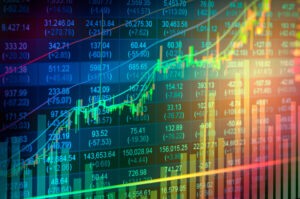For decades the ‘tried and true’ investment approach of liquid cash, bonds, and the stock market was king.
However, we’ve seen an increasing acceleration in recent years towards alternative investment options- from luxury goods and tech necessities to crypto. What’s driving this turn away from traditional investment vehicles? Today we will take a look.
The Stats
A 2020 survey by Connection Capital suggests that even at the height of pandemic concerns, up to 87% of private investors intended on increasing their exposure to alternative investment sources. As mentioned, this can be anything from the rather speculative crypto and blockchain industries, the accompanying web3/metaverse companies, and so on right through to investing in luxury items from Chanel and Dior.
The Impact of Market Volatility
Much of this shift is driven by the record-breaking market volatility we’ve seen in the post-pandemic world. Once, the overall investment advice was that despite short-term market movement, the stock exchange would inevitably rise with time. Now, with massive bearish swings, this no longer looks like such a given.
However, this is not so for all markets. Healthcare, obviously, took a noted swing upwards in the pandemic. But we also saw industries like apparel (remember those luxury goods) transportation, travel, and leisure take massive hits.
Alternate investment vehicles, without the correlation to the public market, offer a softer, but less volatile, investment market. Gold and silver have been the traditional go-to ways to ride out periods of volatility like this. Real estate and bonds have sometimes featured too, but with rising global inflation concerns they no longer look so appealing. But the market for goods that hold value is stronger than ever. Anything that shows a track record of maintaining value in volatility is a worthy proposition.
Rising Expense
Additionally, the stock market has become rather expensive to enter. All of the major stock indices have reached record highs lately, with the S&P offering a P/E ratio well above historic averages. Even the so-called ‘Buffer Indicator’ has reached a similar high. As this is also often seen as the indication of a bubble about to burst, this is sure to put investors off.
Additionally, it’s no longer seen as the automatic rise it once was. In fact, some analysts are predicting the decade between 2020-2030 will see the large-cap stocks drop 7%, as opposed to the historical returns of 10% we’ve seen to date. Small-cap is less predictable, but still anticipated too.
Compare this to some older alternative investments. Farmland has risen 11.5% on average per annum since the 90s. Fine wines have returned 10-15%. The argument for diversified investment has never been stronger.
Interest Rates
To add fuel to the fire, interest rates are dismal, axing the appeal of traditional safe-havens like gold and bonds. Returns below inflation are no returns at all. So the traditional advice to split portfolios to guard against capital depreciation no longer stands. So finding alternative investments to act as a safe haven, which mimic traditional safe havens without the ties to volatility, equities, and interest rates, seem more appealing than ever.
Inflation
On the flip side, we see rising inflation, too. It’s a slightly divisive one- some see the inflation rise as bound to fall soon. However, others predict the rising trend will continue. Again, bonds and other traditional safe havens don’t perform well in a high-inflation environment. Anything that can offer better ‘stored value’ starts to look good at this point. As do investments that appreciate in high-inflation environments.
Technology
Lastly, but certainly not least, we have the recent advances in technological spaces. Once, the ‘Average Joe’ had their access to alternative sources of investment severely throttled. High investment thresholds and a difficult-to-navigate market requiring specialized knowledge kept people out. With the tech boom, many more ‘normal’ people have access to this sort of market that could only previously be accessed by a few.
Overall, it’s easy to see why the world is turning towards new, alternative investment sources to help buffer their savings against these strong winds. However, as always, due diligence is needed. Many of these items are non-liquid, at least compared to stocks, and so can be difficult to leave. Long-term investment is more critical than ever with this in mind. Likewise, many are newer vehicles, meaning providers, advisors, and so on also lack the long track records of more mainstream assets and the trust this builds. So you’re forced to choose as wisely as possible and hope for the best.
However, this is a niche of the investment market that’s only set to grow as the head winds buffeting the stock market grow stronger. Until and unless we see a decided turn towards a more bullish environment, the potential of alternative investment vehicles to offer some diversity and stability to portfolios is only set to grow.
Read more:
Why Alternative Investments Are Hot








